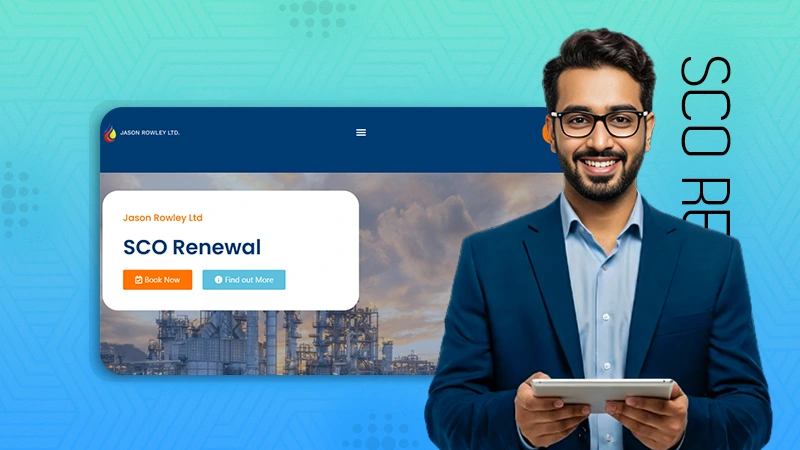Sales Conversion Rate: How to Calculate & Improve It
Imagine a small pizzeria is advertising on different platforms and yet the footfall is not increasing. something is amiss, right? The small pizzeria’s footfall remains stagnant, signaling a potential issue with its marketing strategy. To resolve this, they should assess their target audience, ensure consistent branding across platforms, engage with customers through interactive content, and explore partnerships with local businesses or influencers.

Analyzing the sales conversion rate can be a better tool to understand the above issue faced by the small pizzeria. While footfall represents the number of visitors, the conversion rate provides insights into how many of those visitors are actually turning into paying customers. A low conversion rate despite advertising efforts indicates that there might be a problem with the pizzeria’s offerings, service, or overall customer experience.
By calculating the conversion rate for each advertising platform independently, the pizzeria can identify which channels are performing well and which are underperforming. This data-driven approach allows them to focus their efforts on the most effective platforms and make necessary improvements to the weaker ones.
In addition, analyzing the conversion rate over time can reveal trends and patterns, such as specific days or hours when sales are higher or lower. Armed with this information, the pizzeria can make informed decisions about promotions, pricing, and staffing to optimize their operations and maximize sales.
As Reise Digital advocates, understanding the sales conversion rate is crucial as it shifts the focus from just attracting footfall to converting those visitors into loyal customers. By addressing the underlying issues affecting the conversion rate, the pizzeria can experience a substantial boost in overall business performance.
The Formula
The sales conversion rate is calculated by dividing the number of successful conversions by the total number of visitors or leads and then multiplying by 100 to get a percentage. The formula is:
Sales Conversion Rate = (Number of Conversions / Total Number of Visitors or Leads) * 100
Is It Important?
Oh yes! It is very important to analyze the sales conversion rate. The sales conversion rate is a vital metric for any business because it directly measures the effectiveness of its sales and marketing efforts. It quantifies the percentage of potential customers who take the desired action, such as making a purchase, signing up for a service, or completing a transaction.
Understanding the sales conversion rate offers several benefits. Firstly, it helps identify the efficiency of advertising and marketing campaigns. A high conversion rate indicates that the strategies are resonating well with the target audience, while a low rate signals a need for adjustments to improve effectiveness.
Secondly, tracking the conversion rate can highlight specific weaknesses in the sales funnel or customer journey. By pinpointing where potential customers drop off or hesitate, businesses can make targeted improvements to remove obstacles and streamline the process.
Moreover, the sales conversion rate directly impacts a company’s revenue and profitability. A higher rate means more sales without necessarily increasing advertising expenses, leading to better ROI and improved financial performance.
Benchmarking A Sales Conversion Metric
The benchmark for a sales conversion rate can vary significantly depending on the industry, product, or service, and the specific sales process. There is no universal standard, but generally, a good conversion rate falls between 2% to 5%. However, it’s essential to consider factors like the complexity of the product or service, the target audience, and the type of marketing channels used. Some industries might achieve higher conversion rates, while others might have lower benchmarks.
To fix a low sales conversion rate, businesses must adopt a data-driven and iterative approach. Here are some steps to improve the conversion rate:
Analyze the Sales Funnel
Identify the stages of the sales funnel and pinpoint where potential customers drop off. This could be during website visits, product page views, or checkout.
Optimize Landing Pages
Ensure that landing pages are relevant, engaging, and aligned with the advertisement’s promise. Clear and compelling calls-to-action should guide visitors toward conversion.
Improve User Experience
Make the website intuitive, mobile-friendly, and easy to navigate. Streamline the checkout process, reducing the number of steps and requesting only necessary information.
A/B Testing
Conduct experiments with different elements of the sales process, such as headlines, CTAs, or visuals, to identify which variations yield better results.
Address Customer Concerns
Provide clear and detailed product information. Address common objections or concerns that may hinder the decision-making process.
Leverage Social Proof
Highlight customer reviews, testimonials, or case studies to build trust and credibility.
Offer Incentives
Limited-time discounts, free trials, or money-back guarantees can encourage hesitant customers to take action.
Follow-Up and Remarketing
Implement follow-up strategies to re-engage potential customers who abandoned the sales process. Remarketing campaigns can remind them of the product or service they showed interest in.
Customer Support
Ensure prompt and helpful customer support to address inquiries or issues promptly.
Monitor and Iterate
Continuously analyze data, measure the impact of changes, and fine-tune the sales process regularly to achieve higher conversion rates.
By taking a holistic approach and continuously refining the sales process, businesses can effectively improve their sales conversion rate and drive better results.
Conclusion:
When we listen to our consumers, we understand what they want and try to present them with what they want first and then introduce what they need. This process will reduce the fat tails of the curve. There will always be outliers but it makes better business sense to cater to what is core and in the majority. In this manner, even a small business can drive up its sales and convert interested persons to paid customers.
It may not be possible to always keep redesigning your product as per consumer preference. However, if you listen intently, you will understand that there are many gaps that a consumer has about a product or service. This is an opportunity that salesmen never let go of. It is the perfect time to remove the donuts, emphasize on how the consumer’s needs can be addressed with the product and close the deal with a great pitch delivery.














